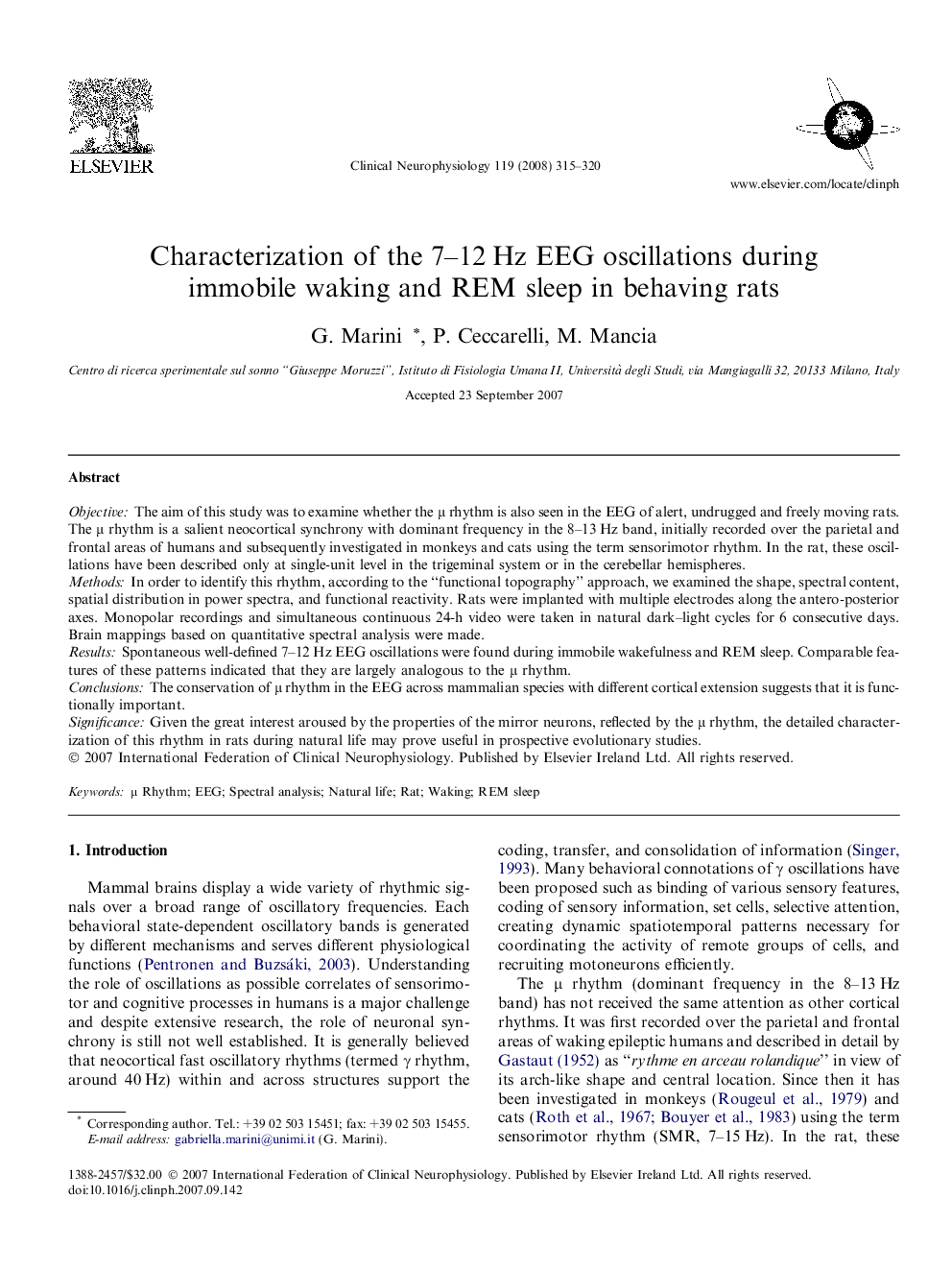| Article ID | Journal | Published Year | Pages | File Type |
|---|---|---|---|---|
| 3047871 | Clinical Neurophysiology | 2008 | 6 Pages |
ObjectiveThe aim of this study was to examine whether the μ rhythm is also seen in the EEG of alert, undrugged and freely moving rats. The μ rhythm is a salient neocortical synchrony with dominant frequency in the 8–13 Hz band, initially recorded over the parietal and frontal areas of humans and subsequently investigated in monkeys and cats using the term sensorimotor rhythm. In the rat, these oscillations have been described only at single-unit level in the trigeminal system or in the cerebellar hemispheres.MethodsIn order to identify this rhythm, according to the “functional topography” approach, we examined the shape, spectral content, spatial distribution in power spectra, and functional reactivity. Rats were implanted with multiple electrodes along the antero-posterior axes. Monopolar recordings and simultaneous continuous 24-h video were taken in natural dark–light cycles for 6 consecutive days. Brain mappings based on quantitative spectral analysis were made.ResultsSpontaneous well-defined 7–12 Hz EEG oscillations were found during immobile wakefulness and REM sleep. Comparable features of these patterns indicated that they are largely analogous to the μ rhythm.ConclusionsThe conservation of μ rhythm in the EEG across mammalian species with different cortical extension suggests that it is functionally important.SignificanceGiven the great interest aroused by the properties of the mirror neurons, reflected by the μ rhythm, the detailed characterization of this rhythm in rats during natural life may prove useful in prospective evolutionary studies.
